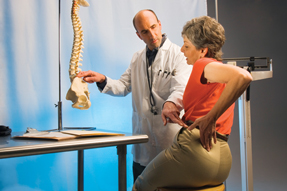Medicare updates affect audits, modifiers and version 5010
This month's column covers three timely yet disparate topics: a new CPT modifier, readiness for Version 5010 electronic claims transactions, and the looming expansion of the recovery audit contractors.
This month's column covers three disparate topics: a new CPT modifier, readiness for version 5010 electronic claims transactions, and the looming expansion of the recovery audit contractors (RACs). All three are timely: The modifier became effective on April 1; the Version 5010 readiness activity is on-going; and the RAC expansion has been announced (although not finalized).
RAC audits expand

is considering expanding its Recovery Audit Contractor (RAC) program from Medicare Parts A and B to Medicare Parts C and D. One of the things the agency would consider is a staggered implementation schedule, with regions of states beginning on a particular date, rather than all states beginning their programs on the same date. A similar phase-in was used with the Part A and B audits. CMS also wants the RACs for Parts C and D to be able to review and assess the effectiveness of antifraud and abuse efforts within those programs.
Spurred on by reports by the Department of Health and Human Services, Office of the Inspector General and audits that showed extensive administrative and resource waste in the health insurance program, CMS set up the RAC program to detect and resolve past payment errors in Medicare fee-for-service claims.
CMS previously ran a three-year demonstration program from 2005 to 2008 in selected states. In 2009, the agency implemented a permanent RAC program, modified from the demonstration.
The agency solicited comments from health care industry stakeholders on the best ways for the RACs to use their collective experiences with identifying underpayments and overpayments in the established fee-for-service program and implementing those concepts in other federal health insurance programs.
RACs will also be expanded to the Medicaid programs. The previously announced start date was April 1, 2011 but that date is now delayed to later in the year. The delay is intended to allow states to prepare their operations and to configure their compliance with the federal Medicaid regulations that will be finalized this year.
In keeping with the state-based nature of the overall Medicaid program, each state's RAC will have slightly different responsibilities, although all must propose targeted areas of susceptibility regarding improper payments. In the process, each state is required to amend its own Medicaid program to reflect its RAC program, and to verify that a RAC is in place.
ACP will continue to monitor the progress of the RAC programs, and will make the information available to its members.
New CPT modifier
A new CPT modifier sneaked in after Jan. 1, 2011. In April, CPT modifier 33 will make its appearance. It didn't appear in the 2011 edition of the CPT code book. But it is being seen as extremely valuable in filing claims for preventive services under the Accountable Care Act requirements.
The Affordable Care Act requires that all health insurance plans provide coverage for preventive and immunization services, without a patient cost-sharing amount (a deductible, a co-insurance payment, or a co-payment). To enable health insurance plans to more easily identify claims for the affected preventive services, physicians are asked to use the modifier.
The preventive services affected are limited to those which the U.S. Preventive Services Task Force (USPSTF) has designated with either a grade “A” or grade “B” recommendation, or the routine immunizations for children, adolescents and adults that the Centers for Disease Control and Prevention's Advisory Committee on Immunization Practices (ACIP) has recommended.
This modifier will apply to preventive services claims with all health insurance plans. It is not needed with the Medicare Annual Wellness Visit, because those services are already defined as preventive and Medicare contractors know the cost-sharing associated with them.
As an example of how to use modifier 33, consider CPT 80061, Lipid Panel. If the test is done to monitor therapy of a patient with established hyperlipidemia, do not use “-33”. But if 80061 is done for a male patient age 35 or older, following the USPSTF's grade A recommendation as screening (billing with the appropriate ICD-9 code, V77.91, screening for lipid disorders), you should use modifier 33.
Checklist for version 5010/D.0
CMS has provided the following checklist to ensure a smooth transition to version 5010.
- 1. Upgrade current transaction versions to version 5010 and D.0. Medicare has performed a side-by-side comparison of the current 4010A1 and 5010 base formats.
- 2. Ensure software is modified to produce and exchange the new formats (that is, trading partners must be able to read incoming 277CA transactions sent from Medicare).
- 3. Review your business processes to ensure that changes are not necessary to capture additional data elements that were not previously required (e.g., impact of patient registration, billing, and claim reconciliation).
- 4. Contact vendors and/or clearinghouses to ensure that affected products and processes are updated (that is, be sure that the license includes regulation updates, and determine if the upgrade will include acknowledgement transactions 277A and 999).
- 5. All physician practices should contact their local Medicare fee-for-service contractor (MAC) for specific testing schedules. See under “Downloads” to find a contractor in your state, or find your operational MAC on this list. For details on testing requirements, see the 5010 National Provider Call presentation.
Do not wait to begin testing with your Medicare Administrative Contractor (MAC) because the MACs will not be able to accommodate large volumes of trading partners seeking production status all at once. Be sure to start testing version 5010 and D.0 as early as possible in 2011.



